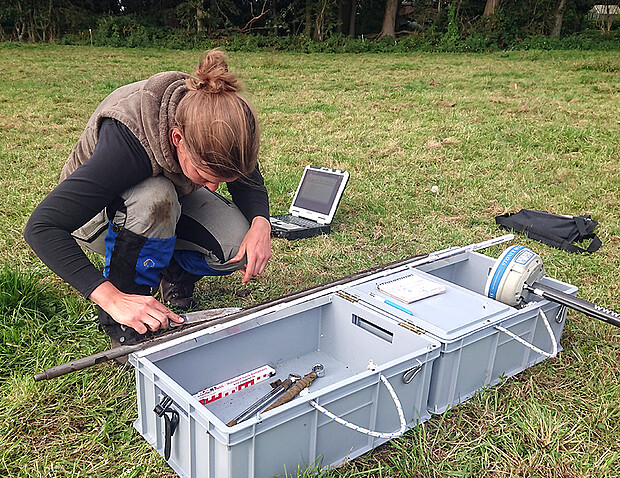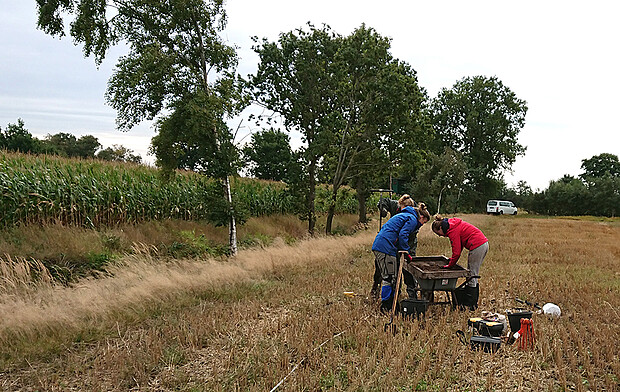Mesolithic in Northwestern Germany. An archaeological survey for water-logged sites



Northern Europe was inhabited by hunter-gatherers until the beginning of a more sedentary way of life around 4000 BC. The last foragers had to deal with a permanently changing environment due to postglacial warming. They had to adapt to changes like reforestation, a changing fauna and sea-level rise. This phase between the end of the ice age and the beginning of farming and settling is called Mesolithic
From some parts of northern Europe we have got some good insights into the living environment and the material culture of the last hunter-gatherers, already. Well preserved sites from southern Scandinavia have provided details about hunting and fishing techniques, the use of wood and other plants as well as the craftsmanship of these people. The existence of Mesolithic foragers is proved for northwestern Germany as well, but there is only a small range of human traces. In most cases only stone tools were preserved in sandy soils.
The project “Mesolithic in Northwestern Germany” aims to detect sites in waterlogged .There, a good preservation of tools made of bone, antler or plant materials can be expected as well as faunal and plant remains from food consumption and settlement structures like fire sites and storage pits.
In the project we record known surface sites from selected micro-regions with special potential for waterlogged preservation along the edges of raised bogs, kettle bogs and basal peat below marine marsh sediments. In several field campaigns, we investigate whether find layers stretch further than previously known and into the bogs and peat areas and whether organic remains of hunter-gatherer activities have been preserved there.
Sites, that turn out to contain waterlogged find layers, are further explored by little excavation trenches and dated by radiocarbon samples. The surrounding of the sites will also be taken into account to reconstruct landscape structure and plant cover and thus gain the best impression of the foragers´ life in the area possible.
In a longer perspective, it will be possible to compare the Mesolithic in Northwestern Germany with the neighbor regions to find out about possible differences in cultural developments and adaptation strategies to regional environmental developments.
The project “The Mesolithic in Northwestern Germany” is funded by DFG and lead by Dr. Svea Mahlstedt. Dr. Martina Karle and Dr. Steffen Wolters support investigations concerning landscape development and environmental reconstruction.
References
Hüser, A., Wolters, S., Larocque-Tobler, I., Mahlstedt, S. & Enters, D., 2017: Von Sedimenten, Zuckmücken, Pollen und kleinen Steinen. Suchen und Finden des Mesolithikums an Pingo-Ruinen. Archäologie in Niedersachsen, 20, 92-96.
Mahlstedt, S., 2015: Das Mesolithikum im westlichen Niedersachsen. Untersuchungen zur materiellen Kultur und zur Landschaftsnutzung. Frühe Monumentalität im soziale Differenzierung 7. Bonn.
Mahlstedt, S., Hüser, A. & Kegler, J.F., 2018: Mesolithic Settlement sites on the East Frisian Peninsula. Landscape history and development with regard to pingo scars as preferred settlement sites. Quartaer 65, 115-127.
